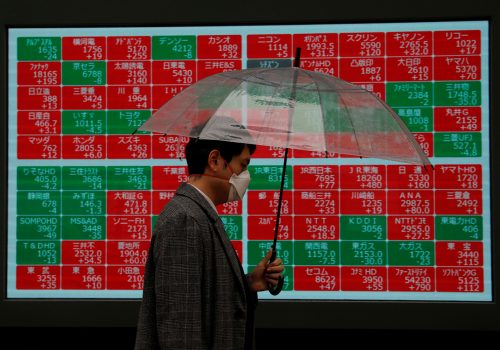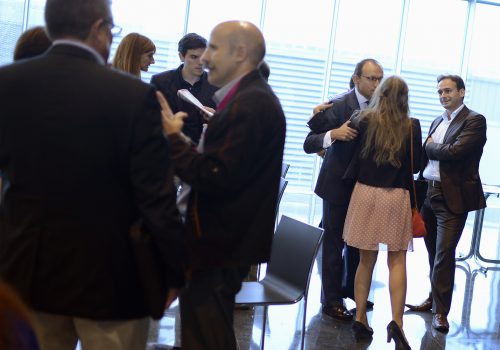Today’s youth face a persistent global underemployment challenge, where they are up to three times more likely to be jobless than adults. And, if recent history repeats itself, it’s about to get worse.
The serious health impacts of COVID-19 seem to be felt by older people above age sixty. However, as the novel coronavirus—now officially a pandemic according to the World Health Organization—spreads through societies and markets, youth, who account for roughly a quarter of the world’s population, are disproportionately at economic risk.
In response to coronavirus spread, companies and civic groups are canceling conferences and implementing travel bans for employees. Cities are taking significant steps to try and mitigate the extent of the outbreak, including outlawing large gatherings or events, closing schools, limiting entry, and even setting up community containment zones. Increasingly, the threat of coronavirus is influencing individual social and consumer behavior, including self-quarantine and social distancing, canceling personal travel plans, and limiting public exposure and interpersonal contact.
The negative impact on global markets is clear. As the Dow plummeted nearly 8 percent on March 9, the US and United Kingdom (UK) indexes experienced their largest drops since the global recession of 2008, sinking into bear market levels on March 11.
The negative impact on young workers and small business owners around the world is likely to be significant and more acute than for others. This was the case with the 2008 global financial collapse, which exposed the vulnerability of the youth labor market. Per the International Labour Organization, youth unemployment increased by 7.8 million between 2007 and 2009. By comparison, in the decade before the crisis, the number of unemployed young people rose by just 191,000 per year on average. Furthermore, during the economic crisis, the global youth unemployment rate, which had been declining before its onset, rose sharply from 11.9 to 13 percent.
In Italy, which is currently on lockdown after experiencing the most coronavirus cases outside of China, the youth unemployment rate has risen dramatically (the 2008 financial crisis led to a record high 43 percent youth unemployment rate in 2014).
The reasons youth were disproportionately hit in 2008 are, in many ways, the same they are likely to be disproportionately affected by coronavirus now. Youth tend to work in seasonal, temporary, and/or insecure or informal work, and they are more likely to be on contract or part-time jobs without health benefits or paid leave, and meaning they are more likely to be laid off, see their hours cut, or suffer longer-term unemployment. Many entry-level or lower skills jobs that employ youth are in retail and services (including hospitality, food, and beverage)—industries that are highly susceptible to a sudden drop in consumer spending. In the case of COVID-19, the combination of a decrease in spending and the eschewing of public places and activities such as traveling, shopping, dining, drinking at bars, and going to the gym, are particularly problematic for the availability and stability of youth jobs and their small business profitability.
So, what, if anything, can be done? Youth unemployment is not a new problem, nor one that can be immediately solved. Much has been studied and said about the range of longer-term public and private sector policy and programmatic options to address supply and demand-side constraints and improve the odds for the young generation—i.e. skills training, public works, start-up entrepreneurial credit to wage subsidies, etc. To support youth through the near-term shock of coronavirus, policymakers should ensure that young people are covered by and aware of any social protection measures such as unemployment insurance or emergency measures such as paid leave, small business loans or debt (including student debt) forgiveness. At the same time, policymakers should take extra efforts to ensure youth have access to digital tools and resources—as well as short-term trainings and courses—that could enable them to quickly gain a new skill and earn supplemental income from growing platform, freelance, and gig economies.
A further COVID19-induced spike in youth joblessness today will result in more lost earnings, greater costs, and slower economic recovery tomorrow. Youth unemployment in the United States also skyrocketed in the aftermath of the financial crisis to an eighteen percent peak in 2010, costing US taxpayers an estimated $25 billion annually in the form of lost tax revenue and government benefit payouts. It behooves all of us to do all we can to ensure history doesn’t fully repeat itself.
Nicole Goldin is a nonresident senior fellow in the Atlantic Council’s Global Business and Economics Program and managing principal of NRG Advisory. Follow her on Twitter @NicoleGoldin.
Further reading:
Image: Waiters wearing protective face masks wait for customers outside a restaurant, following the outbreak of the coronavirus in China, in Kuala Lumpur, Malaysia February 17, 2020. REUTERS/Lim Huey Teng



